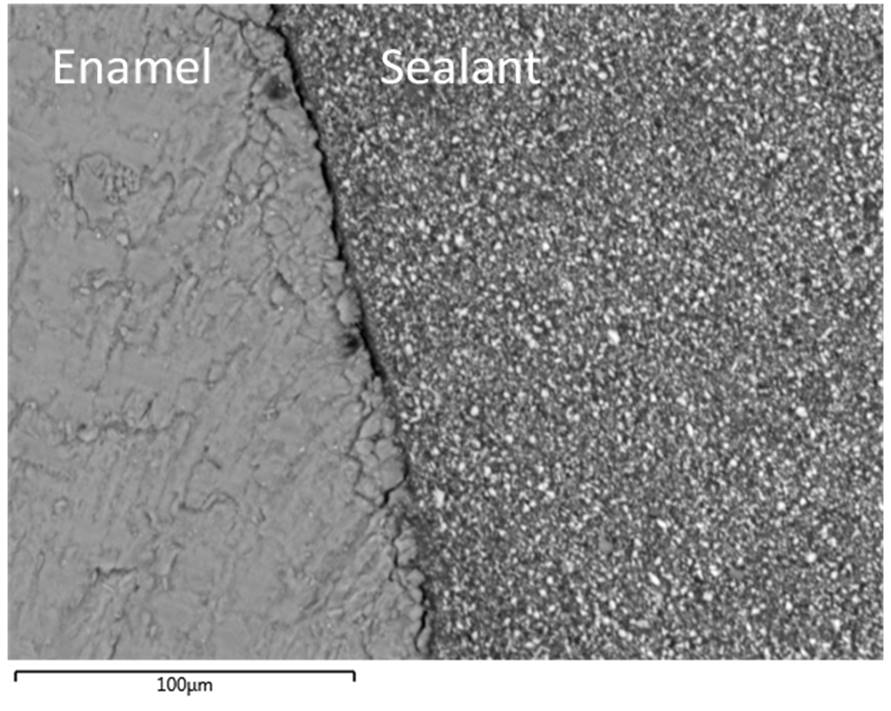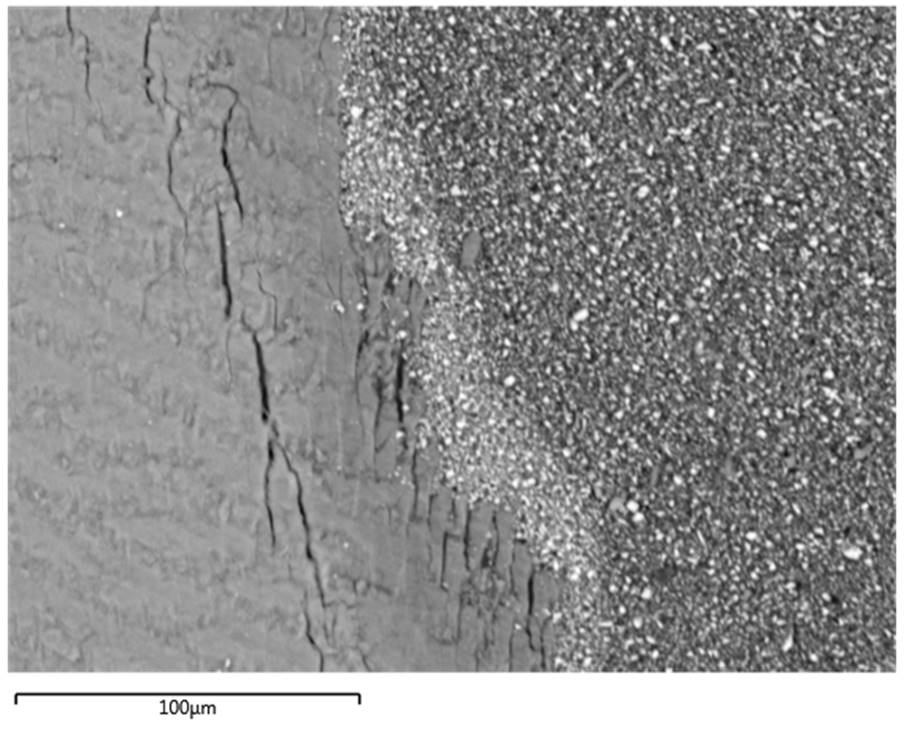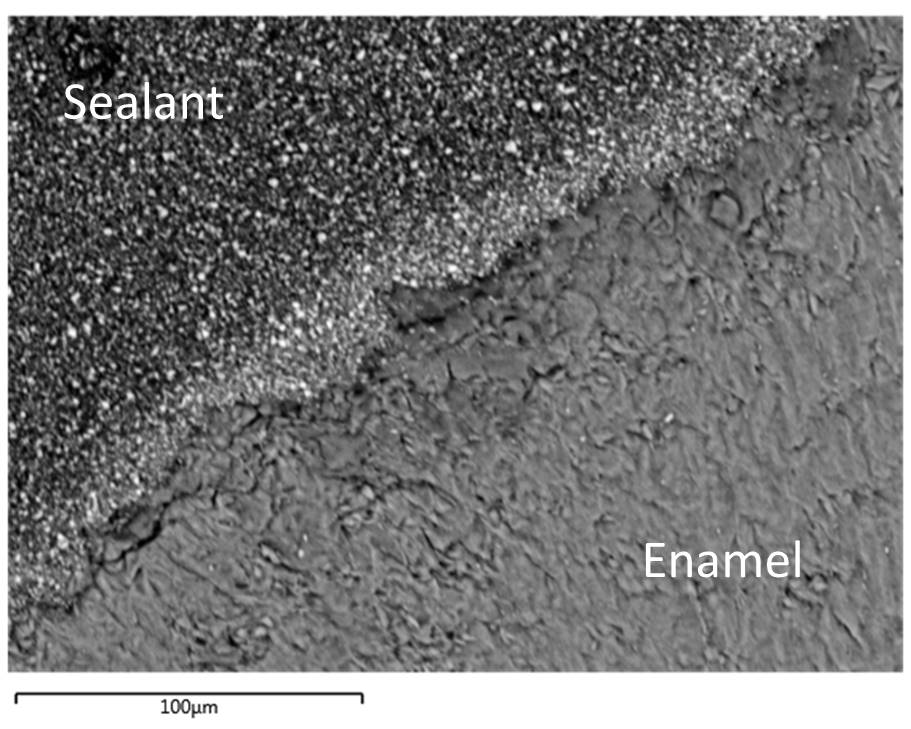Introduction: Resin-based fissure sealants (RBFS) are placed over the occlusal surfaces of premolars and molars to prevent cariogenic microorganisms and organic debris from accumulating in the pits and fissures[1]. UltraSeal XT® hydro™ (Ultradent Products, USA) is a new hydrophilic acrylate-based sealant which is filled with a mixture of inorganic particles.
The application of Er:YAG laser irradiation to precondition teeth prior to the placement of RBFS is reported to improve adhesion and microleakage-resistance; however, the efficacy of laser-conditioning appears to depend upon the laser settings and physicochemical properties of the sealant[1],[2]. The purpose of this study was to investigate the microleakage and enamel-sealant interface of UltraSeal XT® hydro™ as a function of different enamel etching techniques.
Materials and Methods: Occlusal surfaces of sound extracted human molars were either conventionally acid-etched, Er:YAG laser-irradiated, or successively acid-etched and laser-irradiated. The 2940 nm Er:YAG laser (LightWalker®, Fotona, Slovenia) was applied with an energy density of 19 mJ cm-2, power output of 1.2 W, and pulse energy of 120 mJ. UltraSeal XT® hydro™ was applied to each group of teeth (n = 10) which were then subjected to 2500 thermocycles between 5 and 55 °C with a dwell-time of 30 s. Microleakage assessments were carried out using optical and scanning electron microscopies. Microleakage score data were analysed using the Kruskal-Wallis, Mann-Whitney U test.
Results and Discussion: No significant differences in microleakage were noted between the individually acid-etched and laser-irradiated groups (p > 0.05); however, teeth treated with a combination of acid-etching and laser-irradiation demonstrated significantly lower microleakage (p < 0.001).
Electron microscopy revealed that laser-ablation increases the surface roughness of the enamel and causes regions of sub-surface microcracking (Figs. 1, 2 & 3). The inorganic filler particles were observed to separate out from the resin phase and congregate at the interface as the sealant flowed over the roughed lased surface
.

Figure 1. Acid-etched enamel-sealant interface

Figure 2. Lased enamel-sealant interface

Figure 3. Sequentially lased and acid-etched enamel-sealant interface
At present, commercial RBFS are exclusively designed for acid-etched enamel. To take full advantage of the potential benefits of laser-conditioning, a new generation of fissure sealants is required that is specifically tailored to adhere and adapt to lased enamel.
Conclusions: Laser ablation may improve the retention of hydrophilic fissure sealants; although, further research is required to optimise lasing parameters and new RBFS are needed which are specifically designed to adhere and adapt to lased enamel.
References:
[1] AE Khogli et al. Int J Paediatr Dent 2013;23:13-22
[2] P Ciucchi et al. Lasers Med Sci 2015;30:1-9